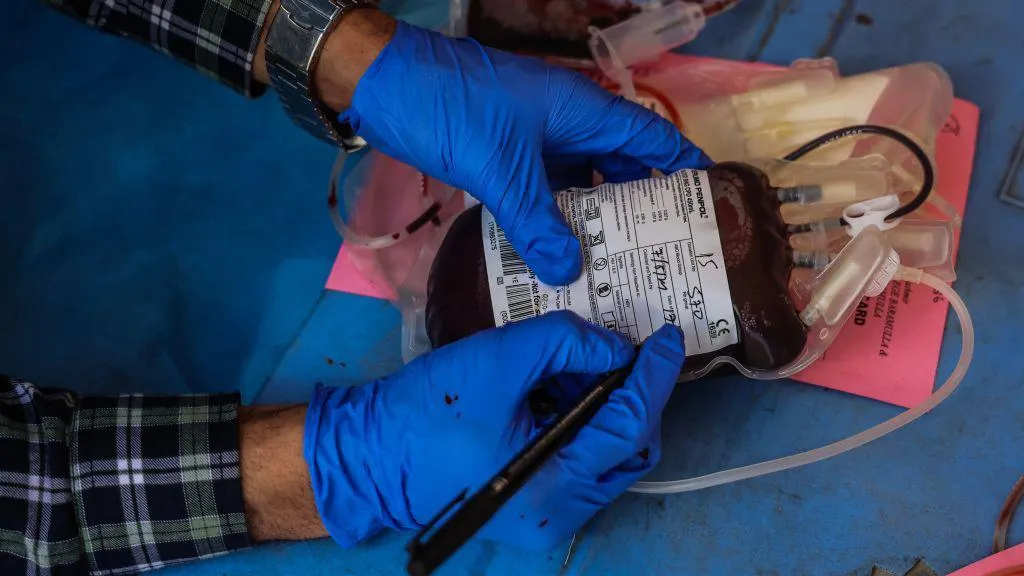News
Call for Change: LGBT Indian Fight Against Discriminatory Blood Donation Ban

The LGBT community in India is increasingly vocal in its demand for the removal of what they see as a discriminatory ban on blood donation. Despite significant strides in securing legal rights, such as the decriminalization of homosexuality in 2018, India still prohibits transgender individuals and gay and bisexual men from donating blood.
Activists argue that the ban is outdated, rooted in stigma, and needs urgent revision to reflect current scientific advancements and the changing social landscape.
Table of Contents
The Origins of the Ban: A Legacy of the HIV/AIDS Epidemic
The ban on blood donations from LGBT individuals in India dates back to the 1980s, during the global HIV/AIDS crisis. At the time, countries around the world implemented similar bans to control the spread of the virus, which had claimed thousands of lives.
In India, the National Blood Transfusion Council (NBTC) and the National AIDS Control Organization (NACO) categorized men who have sex with men (MSM) and transgender individuals as high-risk groups, effectively barring them from donating blood.
Why Is the Ban Still in Place?
Despite significant advances in HIV detection and treatment, the Indian government has retained the ban, arguing that LGBT individuals are still at a higher risk of contracting HIV. This stance is based on a 2021 health ministry report, which claims that transgender people, gay, and bisexual men are “six to 13 times” more likely to contract HIV than the general population. The government maintains that the ban is a precautionary measure designed to protect public health, not a moral judgment.
However, critics argue that this policy is outdated and discriminatory. They point out that other countries, such as the United States, the United Kingdom, and Brazil, have revised their blood donation guidelines to focus on individual risk assessments rather than blanket bans based on sexual orientation or gender identity.
Personal Stories Highlight the Human Cost of the Ban
The ban on blood donation has had real and tragic consequences for many in the LGBT community.
The Story of Vyjayanti Vasanta Mogli
Vyjayanti Vasanta Mogli, a trans woman from Hyderabad, faced an agonizing ordeal when her mother was on her deathbed battling advanced Parkinson’s disease. As her mother’s sole caregiver, Vyjayanti wanted to donate blood to help with her mother’s regular transfusions. However, due to the ban, she was unable to do so.
“I had to keep posting [requests for blood donors] on WhatsApp and Facebook groups,” Mogli recalls, describing the experience as “traumatizing.” Although she was eventually able to find donors, many others are not as fortunate.
The Story of Beoncy Laisharam’s Patient
Dr. Beoncy Laisharam, a doctor in Manipur, shares another heartbreaking story. One of her patients desperately needed blood transfusions to survive, but his transgender daughter was prohibited from donating due to the ban. Despite their best efforts, they were unable to find enough blood from other sources. The patient died two days after being admitted.
These stories highlight the devastating impact of the ban on families who are already struggling with illness and loss. They also underscore the urgent need for policy change.
The Legal Battle: Challenging the Ban in Court
In response to the ongoing discrimination, activists have taken the fight to India’s Supreme Court. In July 2023, Sharif Ragnerka, a 55-year-old writer and activist, filed a petition challenging the ban. Ragnerka’s plea argues that the current blood donation policies are “highly prejudicial and presumptive” and violate the fundamental rights to “equality, dignity, and life” of LGBT individuals.
This petition has been combined with two similar cases filed in 2021 and 2023, both of which are still pending. In its defense, the government has reiterated its concerns about HIV risks, but activists argue that the policy is based on outdated science and reinforces harmful stereotypes.
Global Comparisons: How Other Countries Have Evolved
| Country | Policy on LGBT Blood Donation | Recent Changes |
| United States | Individual risk assessment, no blanket ban | Changed in 2023 to focus on high-risk behaviors |
| United Kingdom | Individualized risk-based assessment, no blanket ban | Implemented new guidelines in 2021 |
| Brazil | No blanket ban, individual risk-based assessment | Lifted restrictions in recent years |
| Canada | Focus on individual risk behaviors, removed blanket ban | Eased restrictions, moving towards individualized screening |
| France | Individualized assessment based on risk, not orientation | Updated policy to remove discriminatory restrictions |
These examples demonstrate that other countries have successfully implemented more inclusive policies without compromising blood safety. Activists argue that India should follow suit by adopting an individual-centric system that assesses donors based on actual risk rather than perceived risk tied to their sexual orientation or gender identity.
The Need for Policy Change: Arguments Against the Ban
Scientific Advancements
- Modern HIV Testing: Advances in testing technology, such as nucleic-acid testing, allow for the detection of HIV in donated blood within a very short window period, reducing the risk of transmission.
- Risk-Based Assessments: Instead of banning entire groups, many countries now use detailed questionnaires to assess individual risk based on recent sexual history and behaviors.
Ethical and Social Considerations
- Equality and Dignity: The ban violates the principle of equality by singling out LGBT individuals for exclusion based on outdated and discriminatory assumptions.
- Impact on Blood Supply: India faces an annual deficit of around one million units of blood, according to a 2022 study by the Public Library of Science. Allowing healthy LGBT individuals to donate could help alleviate this shortage.
- Psychological Harm: The ban perpetuates stigma and exclusion, making LGBT individuals feel dehumanized and insignificant.
FAQs About the Ban on Blood Donation
Q1: Why does India still have a ban on blood donations from LGBT individuals?
The ban is based on guidelines from the 1980s that categorize LGBT individuals as high-risk groups for HIV. The government argues that this is a precautionary measure to protect public health.
Q2: How do other countries handle blood donations from LGBT individuals?
Many countries have moved towards risk-based assessments rather than blanket bans, focusing on individual behaviors rather than sexual orientation or gender identity.
Q3: What are the main arguments against the ban?
Critics argue that the ban is discriminatory, outdated, and based on stereotypes rather than scientific evidence. They also highlight the negative impact on blood supply and the psychological harm it causes to LGBT individuals.
Q4: What is the current status of the legal challenge to the ban in India?
The Supreme Court is currently considering several petitions challenging the ban. The court has asked the federal government to respond, and the cases are ongoing.
Q5: What changes are activists proposing to the blood donation policy?
Activists are calling for an individual-centric system that assesses donors based on actual risk rather than perceived risk. They suggest using detailed questionnaires to screen for high-risk behaviors, similar to policies in other countries.
Conclusion: The Way Forward
The ban on blood donations from LGBT individuals in India is a relic of a bygone era, rooted in fear and stigma rather than science. As the LGBT community continues to fight for their rights, it is clear that the current policy is not only discriminatory but also detrimental to public health. By adopting a more inclusive, risk-based approach to blood donation, India can both protect the health of its citizens and affirm the dignity and equality of all individuals, regardless of their sexual orientation or gender identity. The road to change may be long, but with continued advocacy and legal challenges, a more just and equitable policy is within reach.
Also Read: Dr. Michiaki Takahashi – The First Chickenpox Vaccine

















